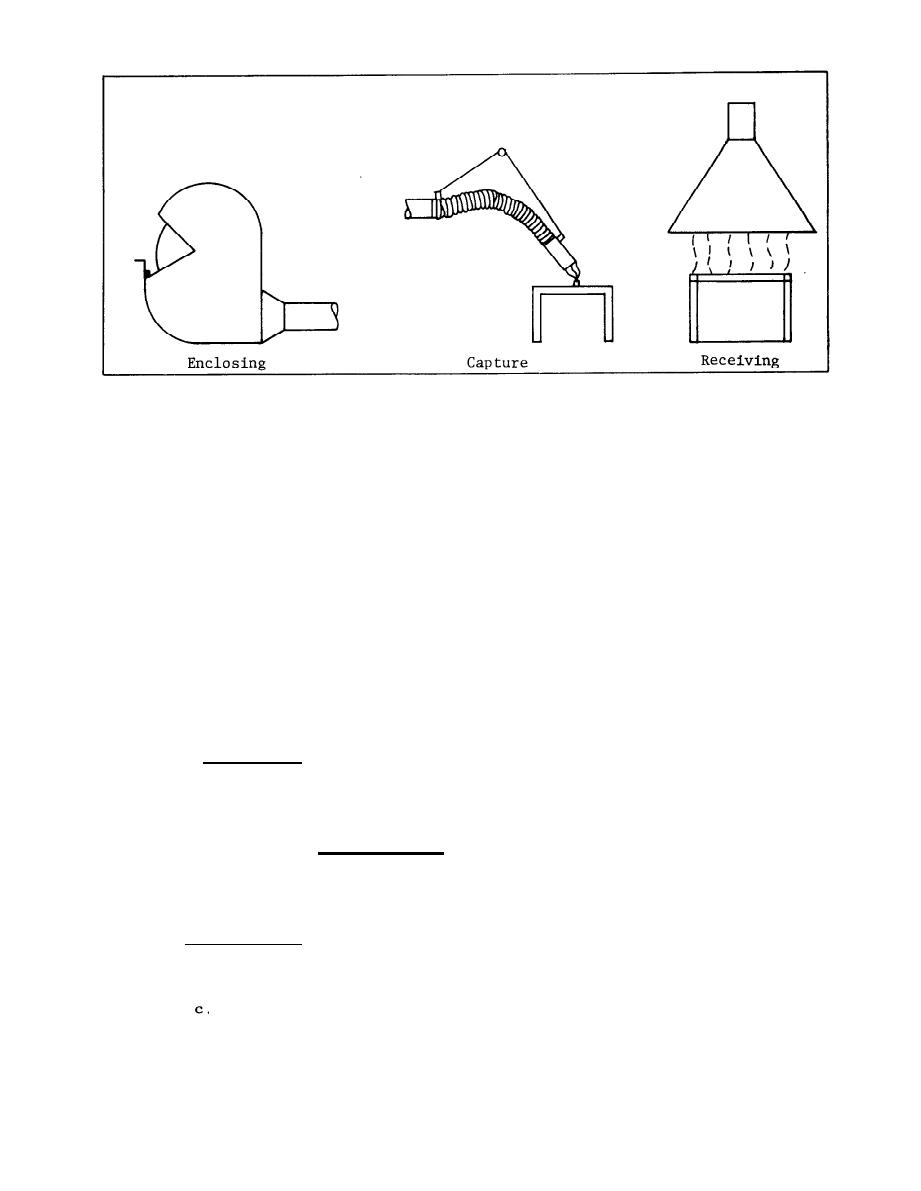

Custom Search
|
|

|
||
 FIGURE 4-l
Hood Types
Smoke can be used to provide a rough estimate of face velocity. Squeeze
off a quick burst of smoke. Time the smoke plumes travel over 2 feet and
calculate the velocity in feet per minute. For example, if it takes 2
seconds to travel 2 feet, the velocity is 60 fpm.
Most hood face velocities are on the order of 100 fpm, which is the
equivalent of a very light breeze. Any competing air currents introduced by
open windows, fans, etc., can destroy the capture of the contaminations by
the hood. Therefore, all competing air currents should be removed or
reduced.
4.3 AIR CLEANERS. Air cleaning devices remove contaminants from an air or
gas stream. They are available in a wide range of designs to meet variations
in air cleaning requirements. There are two broad classes of cleaners: air
filters (for gasses and vapors), and dust collectors.
4.3.1 Air Filters. Air filters are designed to remove dust
concentrations of the order found in outside air and are employed in
ventilation, air conditioning, and heating systems where dust loadings
seldom exceed one grain per thousand cubic feet of air (a typical
atmospheric dust concentration is 0.05 grains per thousand cubic foot).
Commercially available fabric filters use fabric configured as:
a. Tubes or stockings,
b. Flat bags or
C. Pleated cartridges.
Gas and vapor filters include:
Wet scrubbers,
a.
b.
Adsorption and absorption collectors,
Incinerators,
d.
Catalytic scrubbers or
Chemical reaction scrubbers.
e.
Maintenance of these systems should be done in accordance with the
manufacturer's instructions.
4-2
|
 |
|
 |
||